Gardening Tasks To Do in May
Spring is here, flowers are blooming, and it’s time to plant veggies!
To help you enjoy your garden more than ever this year, here are reminders and recommendations for May garden tasks.

Who Is This For?
Our garden checklist is written for gardeners interested in growing food and healthy ecosystems.
We live in the Northern Hemisphere in USDA Zone 7. These recommendations can be applied to many gardens in Zone 6-8.
Not sure what your zone is? Find your USDA zone here. Not in the U.S.? This pdf comparing international zone systems may help.
Quick 3 for Busy Gardeners
If you have limited time for gardening, I suggest you focus on “to do’s” in these three areas:
- Establish a habit to visit daily. As Pat Battle of Living Web Farms says: “Cultivate the fine art of puttering in your garden.”
Some days you’ll take care of small tasks – pull a few weeds and pick something for dinner. Other days, it might be a quick pass to see what’s happening or a few mindful moments to enjoy the space. And then there will be the wonderful days when you get to dig in on bigger projects.
What’s a regular time you could set? Or how might you incorporate it into an existing routine? Think about what gets you moving in the right direction. Perhaps after pouring your coffee foe some morning sunshine. Or after you arrive home from work. What a nice way to unwind! We go out to the garden after dinner in the evenings (at least when we don’t have Cub Scouts or sports). - Weed. Think of this as an investment for the future. It’s so much easier to pull weeds when they are small. Even aggressive weeds, like poison ivy, bindweed, goutweed, goatheads, and non-native honeysuckle, are less intimidating early in the season. If you have lots of ground to cover, you can mow to slow them down. In perennial areas, we try to put down a layer of mulch after we weed to suppress new weeds. If the weeds aren’t seedy, they become part of the mulch layer, à la chop and drop.
- Plant! It’s about time for warm-season crops, and you’ll find lots of ideas about what to plant below. But let’s avoid overwhelm.
Keep your purpose in mind. What’s most important to you this season?
Focus on the plants and projects that will get you there. The rest can wait. For example, if you really want to make lots of salsa, prioritize prepping for and planting your tomatoes and peppers.
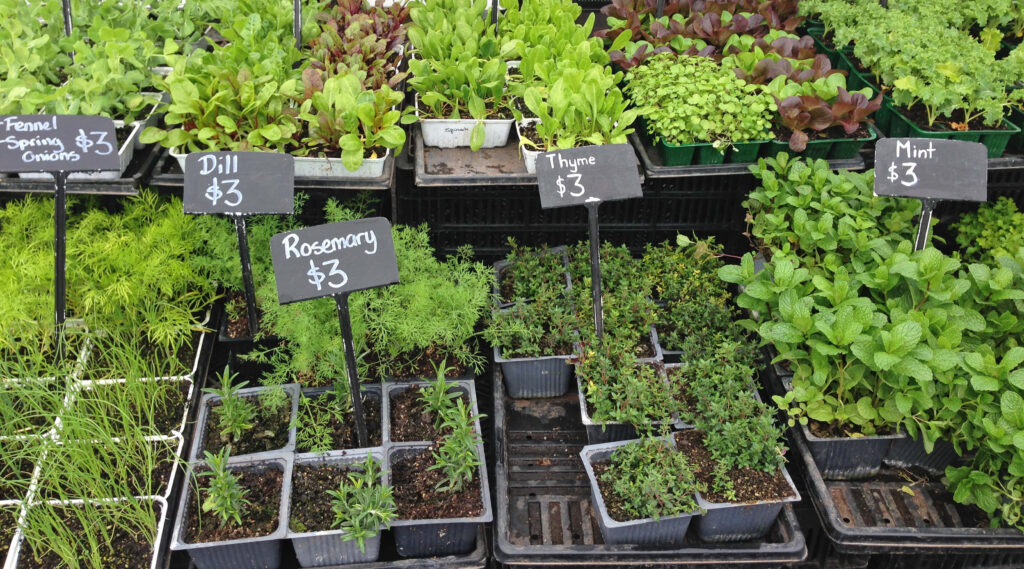
May Garden Checklist
Plants
- Buy seeds and/or transplants.
Local sources (farmers’ markets, small nurseries, regional seed companies) are likely to offer plants well-adapted to your climate. - Yay! Tomatoes. Get them planted.
For a jump-start, use seedlings. Important: double check the weather forecast. A late frost would kill your heat-loving tomato seedlings. - Plant summer crops…corn, beans, peppers, cucumbers, melons, and squash.
Warm-season seeds germinate best with soil temps > 65 degrees. You can measure with a kitchen or compost thermometer. Keep an eye on that weather forecast if transplanting seedlings. - Keep freshly-planted seeds damp.
Water often (but not too deep) until seeds germinate. If germination isn’t light dependent, apply a light mulch. - Add a summer cover crop in bare areas.
Protect your soil by growing a cover crop, like cowpeas, sorghum, or sudangrass. Cilantro and buckwheat are two favorites here – they grow quickly and produce flowers for pollinators.
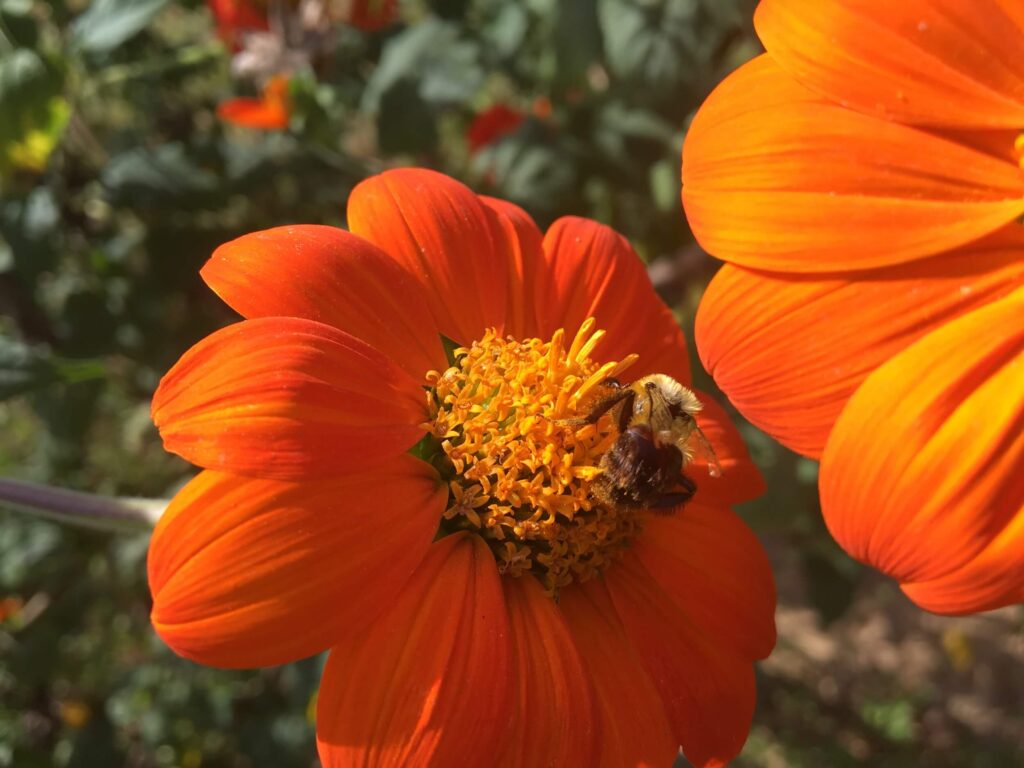
- Plant annual flowers and frost-sensitive herbs.
Now’s the time to plant cosmos, marigolds, sunflowers, zinnias, and other annuals. It’s likely safe to plant tender herbs like basil, lemongrass, and chamomile. - Move houseplants outside and water well.
Most houseplants will welcome a shady outdoor location for summer. Water them until clear water drains. This flushes out salts accumulated during winter. - Harvest cool season crops.
Enjoy fresh snap peas, greens, broccoli, and other goodies planted in early spring. - Let brassicas and lettuces bolt to feed beneficial insects.
When your spring crops start to flower, let them go. Many predatory insects drink nectar as adults and lay their eggs on soft-bodied pests, like caterpillars and beetle larva. - Prune spring-blooming shrubs.
Forsythia, spirea, lilacs, azaleas and most other spring-bloomers have flowers on the previous year’s growth. If pruning is needed, cut them back after they flower in spring. (Or cut while they flower and bring the trimmings inside!) - Allow leaves from daffodils or other spring bulbs to linger.
These leaves are feeding the bulbs that will bloom again next year.
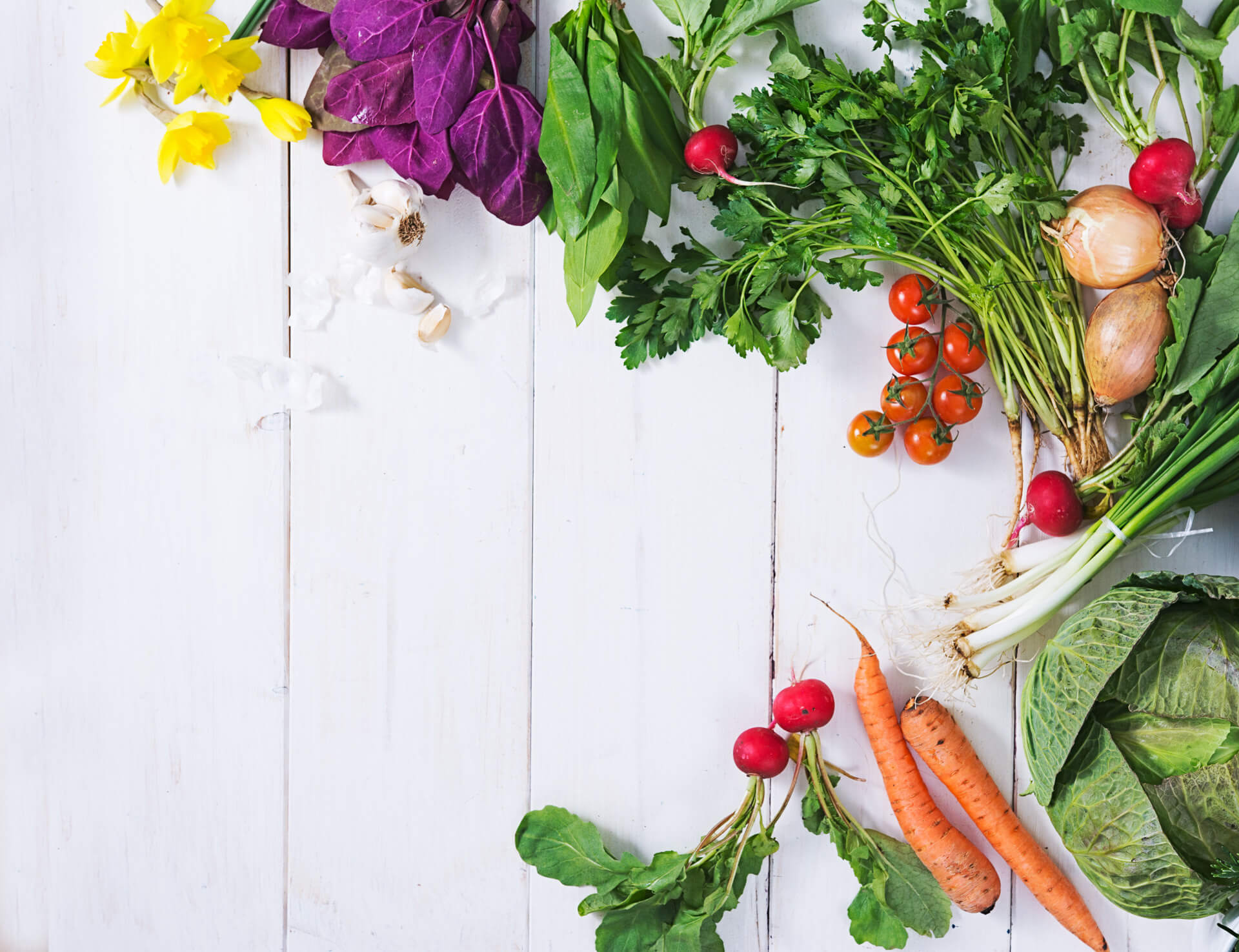
A CLASS FOR NEW GARDENERS
Start Your First Garden
Short, actionable lessons to help you grow healthy food and flowers using sustainable methods. No green thumb required.
Soil
- Start a compost bin.
New to composting? Here’s our mini-course to get started. If you have one bin, start another! - Harvest or turn your compost pile.
If your compost pile has been sitting all winter, see if compost is ready to harvest. If not, turn and water the pile to help speed it along. - Do a soil test.
If you haven’t done a soil test yet, do one now to get useful information about how you may need to amend your soil for best results. Your local cooperative extension service may offer free kits. - Mulch.
Add a good layer of mulch to your beds, trees and shrubs. Mulch will conserve water and save a bunch of time weeding this summer.
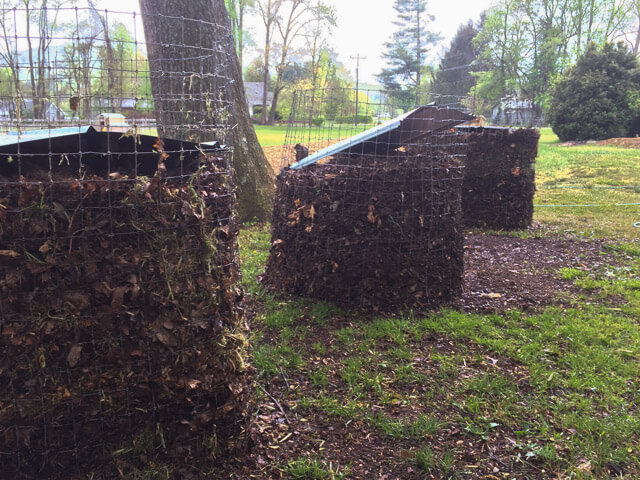
Gear
- Get your garden tools organized.
If you haven’t already, make sure your garden equipment is ready and in good working order. Clean and sharpen pruners, shovels and hoes. - Setup or service your irrigation system.
Whether you use drip, soaker hoses, or a plain water hose, make sure they are clean, working, and leak-free. Easy to lose AND easy to replace, rubber washers are key to leak-free hoses, sprinklers, and sprayers. - Take a walk with your camera and journal.
Make time for some observation. Walk through with your camera or sit down with a garden journal to record what you see. You can’t remember everything, and it’s helpful to have the reference and learn from what works and what doesn’t.
Wildlife
- Invite pollinators to your garden.
Add plants to your garden to attract pollinators and other beneficial insects. Get started with our class on How to Grow a Pollinator Café. - Put up your hummingbird feeders.
Hummingbirds are here! If you haven’t already, clean your feeder well and fill it in a way that’s safe for the birds. - Use aphids to build up predatory insect populations.
When aphids appear on your plants, rejoice. They can be a food source for ladybugs, lacewings, and other predatory insects that will move into other parts of your garden. If you see ants among the aphids, they’ll thwart your plans. They farm and protect the aphids. Prevent ants with a few strips of tape, sticky-side out, or a product like Tanglefoot on the stems of the plant. - Protect the prize.
When you’re growing something especially beloved or expensive, think about adding protection. If gophers or chipmunks are an issue, it might be wire mesh around the planting area. If caterpillars are the issue, you could use a row cover until the plant gets larger and/or needs pollination.
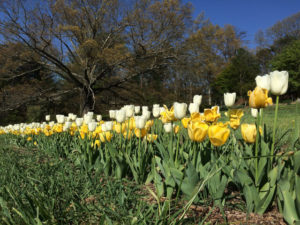
Beyond Your Garden
- Seek out plant sales.
Many nurseries are having plant sales now. It’s a good time to pick up your transplants or invest in perennials. Just make sure you don’t buy more than you can get planted! - Visit a public garden for inspiration.
Your local public garden might offer a special for National Public Gardens Day. - Connect with local gardeners.
Grow a network of neighbors to compare notes and help identify plants and problems. Farmers’ markets, Master Gardeners, cooperative extension offices, public gardens, nurseries, garden shops, food co-ops, social media groups, and community gardens (even if you don’t garden there) are great places to start.
Kids
- Plant a sunflower house.
Sunflower Houses by Sharon Lovejoy is full of fun ideas for children and their adults. - Invite your kids to help.
Brainstorm ways to get the whole family involved in the garden. Give kids their own section to plan, plant and tend. Create spaces to relax and play nearby. As our kids get older, we’re also giving them the chance to earn some spending money when they help us with a longer or more difficult task.
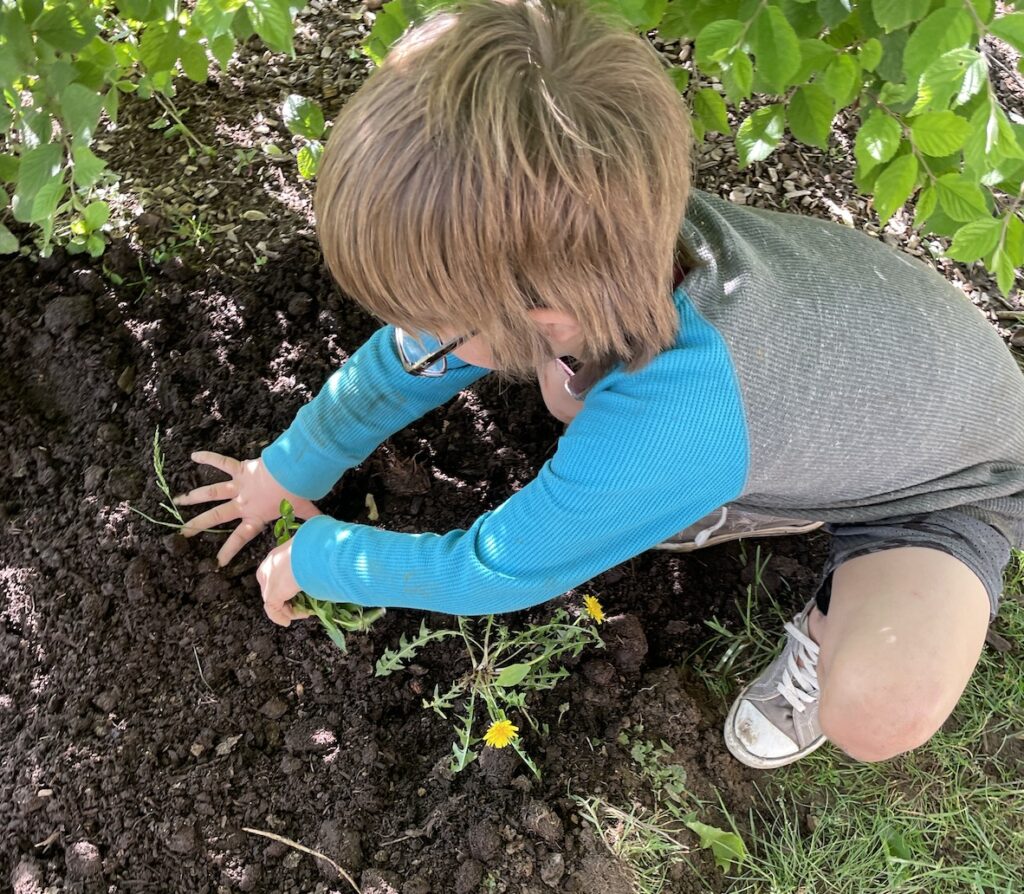
Now, I’d love to hear from you!
What garden tasks are at the top of your list this month?
What projects are you excited about? Any chores are you dreading? Let me know in the comments below.

Lovely checklist Amy! Thanks!! We are going to make another green bean teepee in the new garden and also get the irrigation up and my baby seed starts (mini plants!) into the ground. We are also going to take your advice and cover crop and/or lay weeds down in the beds we are not yet ready to plant. Looking forward to ticking things off the list!
Thank you, Andrea! Your plans sound fantastic. 🙂 I bet your kids will love playing in the bean teepee. Anything “secret” is always a favorite around here!
Love the list! Very organized and informative. We have pepper, tomato and cabbage plants in the ground, a small herb garden planted and getting ready to put the rest of our veggie seeds in. I’m already planning some new things for next year like blueberry and strawberry areas and fruit trees!
Yay, Michelle! Hopefully, you were able to get those seeds in before this week’s rain. I didn’t quite get everything planted, but I’m not complaining. 🙂 We’ll just have a later start on our squashes and pumpkins!
Thought I’d check out your list to see how far behind I am lol. Glad to see I’m keeping up. Are you going to Planting in the Mountains this weekend or Herbfest next weekend? Both at the WNC Farmer’s Market. I used to work Herbfest for a community gardening project, it’s great fun. I’m going the 5th.
Yay! Glad you’re not behind, Gail. With the rains, we’ve found it a little challenging to get out into the garden as much as we’d like. 🙂
We aren’t planning to go to the events, but Herbfest sounds amazing! I’m looking forward to going when the boys are a little older (or when Colby’s available to watch them that day! 🙂 ) I’ll have to check out Platning in the Mountains, too!